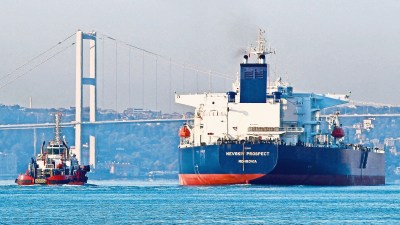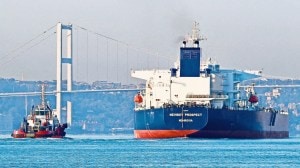Mega shopping mall ahead in race against the clock
The bridge that paves the way to the Shopping Olympics spans a part of east London that is becoming increasingly divided.
The bridge that paves the way to the Shopping Olympics spans a part of east London that is becoming increasingly divided.
At one end,visitors spilling out of Stratford station face an ageing shopping mall full of pound shops and burger joints. But on the other side,in the Olympic Park,sits the polished bulk of Westfield Stratford City,Europes largest shopping centre. Anchored by stalwart middle-class brands John Lewis,Waitrose and Marks & Spencer the contrast could not be greater.
With the grand opening only three weeks away,95 per cent of the centres shops have been leased to retailers who are more at home in Oxford Street and the west end of London than the eastern reaches of E20,the postcode created for the regenerated district.
Its position as the de facto gateway to the Games means that,controversially,the first that many spectators will see of the London Olympics is a giant retail park. Seventy per cent of visitors to the London Games are expected to pass through the 1.45bn centre,and its Australian developer Westfield boasts that this makes it the ultimate marketing tool.
What really matters to Westfield is the opportunity to convince millions of people who will come to the Olympic Park about what has changed in east London and give them very good reason to come back, said John Burton,the director of Westfield Stratford City.
Burton has seen the project through from its inception in 2004,when the company acquired the site on disused railway land,via its takeover of property company Chelsfield. Since then he has thrashed out agreements with the Olympic authorities and Newham council to facilitate a development so complicated it was expected to take 40 years.
The Olympics have put Stratford on the map but he cautioned against expecting a torrent of spending during the Games. The idea that 70 per cent of all people coming through the shopping centre is going to be some sort of financial windfall is highly questionable, he said. Spectators might be too busy rushing to their seats to spend,but retailers are relying on them coming back if they like what they see.
The sheer scale of the 1.9m sq ft mall is such that only an Olympic stadium seems a worthy neighbour. The mall sits on the other side of the city from Westfields existing shopping centre,which is in west London at Shepherds Bush incidentally home to the last Olympics London hosted,in 1948.
At its Stratford site,Westfield has played a significant role in the development of the Olympic Park. Burton said the construction of the park and the shopping centre were intrinsically linked.
In the early days we thought the whole project the shopping centre,5,000 homes,offices,hotels and schools would roughly take 40 years. As a result of the Olympics,the time-scale is closer to 15 years, said Burton.
Original costs for infrastructure for the project were upwards of 500m,including establishing transportation,access roads and utilities on the 180-acre site. However,after a remarkable series of events,which included London winning its bid to host the Games and Newham council granting Westfield planning permission,the group began negotiations with Olympic organisers about how to make the project work.
Westfield had permission to develop thousands of homes; one of the only ways such a large block of housing could be built in time to be used as the Olympic Village.
The Olympic Delivery Authority,the body charged with building facilities for the Games,also needed to consider access to the park,and Westfields proposed shopping mall was the natural point of entry,sitting,as it does,among Stratfords cluster of public transport links. Through a complicated cocktail of arrangements the long-term infrastructure costs were split and the land was unlocked.
It is easy to imagine crowds of Olympic spectators gawping at the array of shops,restaurants and special effects,including a digital waterfall,as they make their way to the games. However,the site is still teeming with hundreds of workers,labouring to allow Westfield to open its doors on September 13 almost a year ahead of the Olympics.
Sir Robin Wales,Newhams mayor,tasked the developer to deliver jobs,jobs and more jobs but few of the 28,000 construction workers were locals. Burton said: What really matters to the local community here are jobs in retail,catering and hospitality, emphasising their less-transitory nature.
Promising that the shopping centre and its tenants were on track to deliver jobs for 2,500 long-term unemployed in the local area,he confidently proclaimed: Were the first piece of the Olympic legacy.
Claer Barrett & Vanessa Kortekaas 2011 The Financial Times Limited



- 01
- 02
- 03
- 04
- 05




























